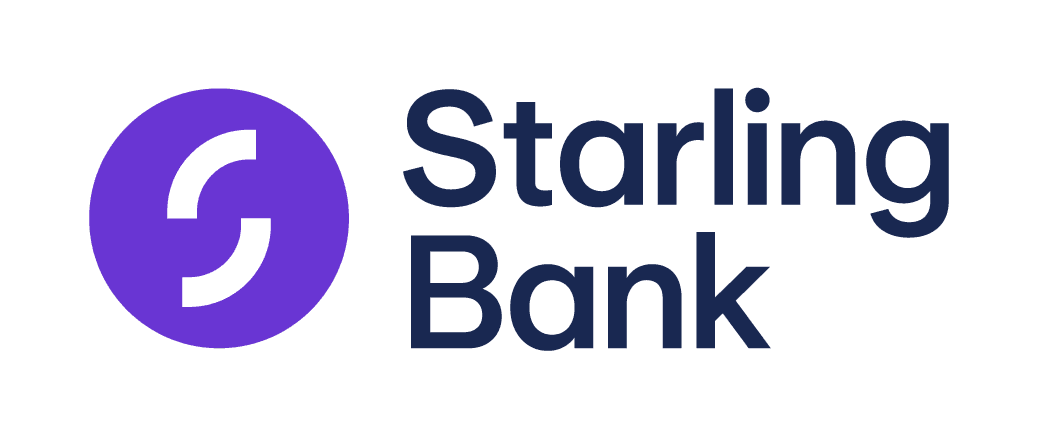
Customers are spoilt for choice when it comes to banking. So much so, it can be confusing to navigate. There are not only many more banks to choose from compared to a decade ago, but also many different types, including the new breed of “challenger bank”, which are mainly digital-based.
The main challenger banks and banking apps
Monzo
Monzo was one of the first digital challenger banks to launch in the UK, hitting the market back in 2015.
Monzo is well known for its “hot coral” payment card and slick banking app, which includes its popular “pots” savings features, budgeting tools and spending notifications.
Its fee-free overseas spending has made Monzo a hit with customers. It‘s also consistently added new features to its app including Monzo Flex, its own buy now, pay later product, and shared tabs, where you can split bills with friends and family.
The bank has branched out into joint accounts, premium current accounts and business accounts, and now has over 10 million customers in the UK.
Revolut
Revolut opened its virtual doors in 2015. Revolut finally got authorisation to become a UK bank in July 2024, but as yet, it’s not operating as one. This means your cash won’t be protected by the Financial Services Compensation Scheme.
Revolut operates through its mobile banking app and offers 5 tiers of current account – Standard, Plus, Premium, Metal and Ultra. The monthly fees vary, but the more you pay, the more your monthly limits increase on things like free ATM withdrawals. Revolut also offers a kids’ card, Revolut <18 Account, where your child can have their own app and spending card.
In addition, Revolut has a more international reach – it’s available in 48 countries and has more than 50 million customers across the world. It offers fee-free currency transfers in over 35 currencies for UK bank account holders.
Starling
Starling followed Monzo and Revolut and went live in 2017. Like its 2 main rivals, Starling’s big draw is its intuitive banking app, through which you can open a bank account.
Its current account is free and offers features such as spending insights, savings goals, cheque imaging, fee-free spending abroad plus an overdraft option.
Starling has expanded into savings and is now offering fixed savings accounts. It also has a business banking offering and a kids’ debit card, Starling Kite.
Monese
Monese is a digital banking app and card, which can be opened across Europe, including in the UK. It has the option of adding a Eurozone account alongside your UK account.
In the UK there is the free basic bank account (Simple), and 2 fee-paying ones (Classic and Premium) to choose from. You get the usual debit card with ATM and payment functionality, plus the ability to set up direct debits or foreign money transfers – though the monthly fee you pay determines your free payment limits.
Chase
Chase is a relative newcomer to the UK, launching in September 2021. However, it is part of the American banking giant that is JPMorgan Chase.
It has no branch presence in the UK, but it offers all the things you would expect from a digital bank, including 24/7 in-app support, budgeting features, no monthly fees and no charges for using the card abroad. Its main limitation is that you can’t deposit cash or cheques into the account.
Chase offers cashback on debit card spending, interest on current account balances, a linked savings account and interest on savings round-ups.
Zempler
Zempler offers digital-only current accounts, available to manage through its app or online, and there are a couple of different fee-paying accounts to choose from.
Zempler specialises in offering accounts to customers with bad credit. You get all the standard features of a current account, such as a card, ATM withdrawals, direct debits and overdraft option. But it also aims to help build up your credit score by “lending” the monthly account fee to you, which you then pay back, counting as a timely repayment on your credit file.
A list of challenger banks and banking apps in the UK
What is a challenger bank?
A challenger bank is one that’s smaller and newer than a traditional bank. By newer, we mean that most challenger banks were founded after 2009 – so after the 2008 global financial crisis – and the vast majority were established after 2014.
Their plan is to compete with big banks such as HSBC, Lloyds, Barclays and NatWest. By offering cheaper deals, more flexibility, better service or all of the above, challenger banks hope to win over customers.
In a nutshell, challenger banks are trying to squeeze into the market and take opportunities that mainstream banks have been neglecting because of their size, relative market dominance and older technology systems.
Challenger bank advantages
It’s important to understand that just because a bank calls itself a “challenger” it doesn’t mean that it’s necessarily better for the consumer. It is true, however, that challenger banks usually bring some advantages.
- Challenger banks are hungry for customers. A challenger bank doesn’t have a long list of established customers that have had an account for years, if not generations. So, it has to get creative. This usually translates to lower fees, a quicker set-up and more transparency.
- They’re techy. One of the biggest complaints levelled at traditional banks is that they struggle to keep up with technology. For example, the big banks have been slow in coming up with efficient and user-friendly banking apps. Challengers usually excel when it comes to user experience since they’ve built their systems with newer tech, from scratch.
- They’re smart. Traditional banks often mean loads of letters, queues and bureaucracy. Simply opening an account can be a time-consuming process. Challengers usually cut down on that process, typically allowing you to register online or on your phone in just a few minutes, sometimes without proof of address.
Traditional banks are now starting to catch up on all of this, which is living proof that more competition means better service for consumers across the whole market.
Challenger bank disadvantages
So, is it all roses with challenger banks? Well, not necessarily. It really depends on your banking needs and preferences. While challenger banks bring many advantages, there are also some notable disadvantages.
- They typically lack a physical presence. Don’t forget that if you pick an online only bank, you won’t be able to just pop into a branch and speak to a member of staff. You’ll have to figure out many things by yourself.
- They tend to specialise. If you bank with one of the big banks, you can get current accounts, credit cards, mortgages, loans and savings accounts all with the same bank. This is generally not the case with challenger banks. Most of them only offer a limited number of specific services, although they’re gradually expanding their product ranges.
- They aren’t great for cash. If you mostly rely on cash, using a bank that doesn’t have physical branches is likely to be a headache.
Are challenger banks online-only?
Many challenger banks don’t have physical branches, which allows them to save money and offer better deals. This is true for some of the best challenger banks, such as Monzo and Starling Bank. If you bank with either of these, you can do most things through a mobile app.
But there are exceptions: Metro Bank, for example, launched in 2010 as a high-street challenger dedicated to better customer service. At the time, its branches stayed open up to 12 hours a day, but it has since cut back to opening 9.30am to 5pm.
Digital challengers are also coming up with new ways of establishing their physical presence across the UK. For example, Starling and Zempler allow you to deposit cash into your digital account at Post Office branches.
How to compare challenger banks
The trick to comparing challenger banks – or any personal finance service – is to know your needs and habits. There isn’t one bank that’s the best fit for everyone, so set your priorities, think about what you want to get out of your bank account and only then compare your options. We’ve put together a list of questions you can ask yourself to kick-start your research.
- Which product are you looking for? Are you looking for a current account for day-to-day banking, a savings account or a loan? Challengers tend to specialise, so first, you may have to figure out which one offers the services you need.
- Do you use a lot of cash? Some challengers have limits on ATM withdrawals, and not all of them allow cash loading.
- Do you travel abroad much? This is a strong point for many challengers. Some allow you to use your card abroad without any foreign currency exchange fees at all.
- Do you need immediate access to your money? If saving money is your main goal, you’ll want to compare interest rates, but also access. Does that juicy annual rate mean that you can’t get your money back before the savings product expires? (Spoiler alert: usually, yes.)
- What features do you want? A lot of the challenger banks come with a wide range of features such as crypto trading, stock trading and budgeting features on top of an existing current account.
Once you know all this, you can then compare fees, rates and products knowing exactly what your priorities are to help find the best challenger bank for you. Don’t forget to look at what traditional banks offer as well – they may surprise you.
Many challenger banks have been designed to complement our modern lives, so it’s not a coincidence that they tend to score highly for customer satisfaction.”
Are challenger banks safe?
It depends on the bank. The first thing to do is to check that the provider you’re looking at is actually a bank. That is to say, whether it has a full banking licence or not. If it does, your deposits will be protected up to £120,000, just as they are in a high-street bank, thanks to the Financial Services Compensation Scheme (FSCS).
If the provider isn’t a bank, it doesn’t mean your money isn’t safe, but it does mean that the level of protection isn’t the same. Always make sure that the provider is regulated by the Financial Conduct Authority (FCA). Many challengers hold an FCA licence to issue electronic money.
Challenger banks know that security is a big concern for their customers, so they usually take great care to ensure that customer data is safe and that apps and cards are well protected. However, if you are going for a digital-only account, it’s good practice to be aware in advance of what happens if you lose your card — can you block it or cancel it directly from the app? What if you lose your phone — would someone be able to access your banking app and your money?
Our 2025 customer satisfaction league table
We asked customers of banking apps and current accounts providers featured in this table whether they'd recommend it to a friend and we've ordered the table by the percentage score. Our independent survey was carried out in January 2025.| Brand | Logo | Customers who'd recommend | Review | |
|---|---|---|---|---|
| Chase |  |
100% | Chase stands out amongst the crowded current account market by offering its current account holders 1% cashback (up to £15 a month). | Read our review |
| Revolut |  |
93% | Revolut's Revolut is an app-based banking brand with a range of personal e-money accounts and offers fee-free spending abroad. | Read our review |
| Starling |  |
93% | Starling's easy-to-use app and current account is the perfect way to track your spending habits, and it's also good for travelling abroad. | Read our review |
| Monzo |  |
90% | Popular digital challenger bank Monzo offers app-based current accounts that are packed with useful money tools. | Read our review |
| first direct |  |
90% | Known for its reliability and providing great customer service on the phone 24/7, first direct is loved by customers. | Read our review |
| Kroo |  |
83% | Kroo gives a good interest rate on your current account balance as well as fee-free spending abroad. | Read our review |
| Monese |  |
67% | Monese is a digital banking app and card using smartphone technology to improve your banking experience. | Read our review |
Sources
More guides on Finder
-
Is your money fit to fly?
Uphold is a digital asset platform with a multi-currency payment card. Their mission is to spotlight and solve some common money challenges from budgeting and saving to travel – and the age-old debate of whether anyone still uses cash anymore.
-
Kuda money app review
We take a detailed look at the Kuda money app to see how it works.
-
Snoop app review
The Snoop app promises to help you spend your money in a smarter way and show you how take advantage of the best deals out there.
-
Monzo statistics: Revenue, number of customers and market share
Valued at around £3.7 billion, and having 7.5 million customers, Monzo is a British startup success story.
-
Revolut statistics: Revenue, number of customers and market share
With 30 million customers worldwide and 38.2 million app downloads, Revolut is one of the most successful online banks.
-
Tally Money review
Tally is an innovative banking app that effectively uses gold as a currency. We’ve looked into how it works for you.
-
Best banks and bank accounts for travelling and spending abroad
Planning a trip abroad? Make sure you have a travel money card and app set up and ready to use abroad. Check out our guide to find the best one for you!
-
Plum app review: The AI assistant that helps you save money
Plum’s app uses artificial intelligence to help you set aside money and spend wisely. Our review analyses the money management features on offer.
-
Chip savings app review
The Chip savings app will connect to your current account and stash money away automatically. We cover all you need to know about the innovative app in this review.
-
Atom bank review
Is Atom bank the right challenger bank for you? We explore the app and the features of Atom’s Fixed Saver accounts.

